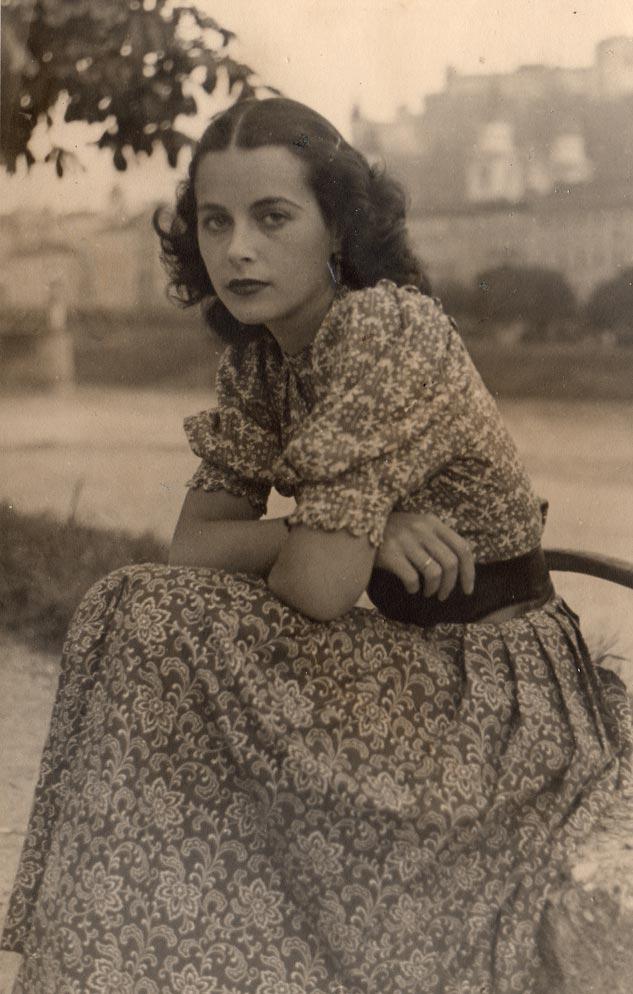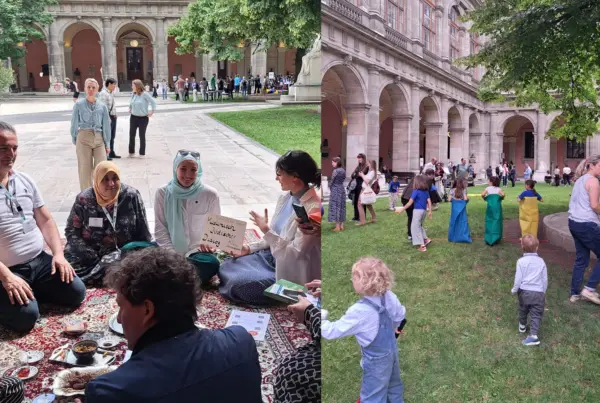Hedy Lamarr, the glamorous silver screen legend of the 1930s and 1940s, was not just a pretty face – she was a genius and, she was Austrian. Her frequency hopping technology has become the foundation of today’s WiFi, Bluetooth and GPS systems. Nicknamed the ‘Mother of WiFi’, her legacy as an inventor highlights the contributions of women to science and technology.
Diana Mautner Markhof, 11 April 2022
Chinese version | German version
The general public knows Hedy Lamarr as the silver screen legend from Hollywood blockbuster films of the 1940s such as Samson and Delilah (1949) and White Cargo (1942). Yet Hedy Lamar was not just one of the era’s most beautiful woman, but a major inventor. In 1940, together with composer George Antheil, she invented a new technology based on “frequency hopping”, which became the foundation of WiFi and Bluetooth.
Originally, this extraordinary and novel communication system was designed to help guide torpedoes towards their targets. This radio guidance system worked through “frequency hopping”, whereby transmitter and receiver ‘hopped’ between radio frequencies in order to prevent any interception. Antheil and Lamarr patented their invention with the US Patent Office in August 1942 under US Patent No. 2,292,387.

Hedy Lamarr in 1935 in Salzburg. © Anthony Loder Archive
Hedy Lamaar was born Hedwig Eva Kiesler in Austria on 9 November 1914 into a well-to-do Jewish banking family. Her interest in technology was sparked by her father, who discussed the inner workings of machines with her during their long walks. She inherited her musical and artistic talent from her mother, who was a concert pianist.
At the young age of 16 she was discovered by the renowned Austrian theater and film director and producer Max Reinhard. She enrolled in acting classes under his guidance in Berlin. Her film debut in 1930 was in the German film Geld auf der Straβe (Money on the Street).
It was not until 1932 that the public took note of her performance in Ecstasy. This film was highly controversial at the time. Pope Pius XI denounced the film in the Vatican newspaper, as did the Catholic Legion of Decency. The film was not released in the US until 1935, but did not receive the Hays Code seal of approval, which would have allowed a wide American release. Ecstasy put Lamarr on Hollywood’s radar.
While Lamarr’s short-lived marriage to Fritz Mandl, an Austrian munitions dealer, lasted only from 1933 to 1937, she gained knowledge of weaponry which would later assist her in her breakthrough invention. She signed with MGM Studios after meeting Louis B. Mayer during her sojourn in London after leaving Mandl. The film Algiers (1938) made her a sought-after star.
Once in Hollywood, her amazing beauty, grace and elegant European accent mesmerized audiences and Howard Hughes, the eccentric millionaire, who encouraged her inquisitive scientific mind. Hughes introduced her to leading scientists and technicians. She was a self-taught, inventive, technical genius, helping Hughes to develop faster planes for the US military. She took her inspiration from nature, combining the fastest fins of fish and wings of the fastest birds. She is quoted as saying: “Improving things comes naturally to me.”
She was considered to be the most beautiful woman of her time. She was married a total of six times and had one son, Anthony Loder. In 1953 she became an American citizen and was honored with a star on the Hollywood Walk of Fame in 1960.
Although the US Navy did not implement her invention until the 1960s and her US Patent expired prior to her capitalizing on its ingenuity, she and Antheil were honored in later years for their invention. The fabric of our technological society is founded on the principles of Lamarr’s and Antheil’s ingenious invention, which today is incorporated into Bluetooth, GPS, CDMA and Wi-Fi technology and communication systems.
In 1997 the Electronic Frontier Foundation (EFF), the leading nonprofit organization defending civil liberties in the digital world, awarded their Pioneer Award to Lamarr and Antheil. In the same year, Lamarr was the first woman to receive the Invention Convention’s BULBIE Gnass Spirit of Achievement Award, the so called “Oscar of inventing”. Although she died in 2000 at the age of 85, Lamarr and her co-inventor were posthumously inducted in 2014 into the US National Inventors Hall of Fame for their invention. Lamarr is now called “the mother of Wi-Fi”, which proves she was not just beautiful but had a brilliant mind.
The Jewish Museum Vienna acquired the inheritance of Hedy Lamarr which includes photos, personal letters, documents and clothing. Anthony Loder, the son of Hedy Lamarr, also left her valuable hand drawings of torpedo defenses, considered the precursor of Bluetooth, to the Jewish Museum Vienna. From November 2019 to December 2020 the Jewish Museum had an exhibition in her honor: “Lady Bluetooth. Hedy Lamarr”. All of Hedy Lamarr’s inheritance will eventually be exhibited in her own Hedy Lamarr Museum in Vienna. The fascination with Hedy Lamarr continues and her story will be featured in a soon-to-be-released Apple TV eight-episode series “Hedy Lamarr” starring the Israeli actress, Gal Gadot.
Her final resting place is in an honorary grave in the Wiener Zentralfriedhof (Vienna Central Cemetery) where Ludwig van Beethoven and Johannes Brahms lie. In honor of Hedy Lamarr, the City of Vienna has awarded the Hedy Lamarr Prize to innovative female scientists since 2018.







